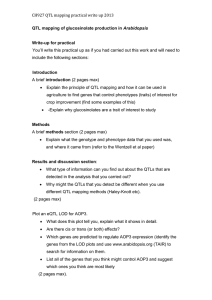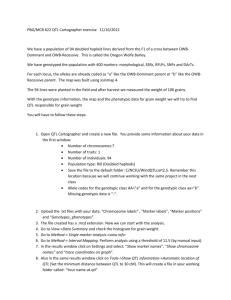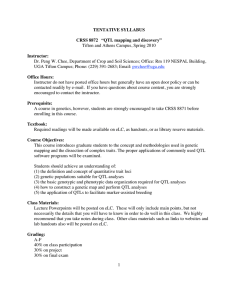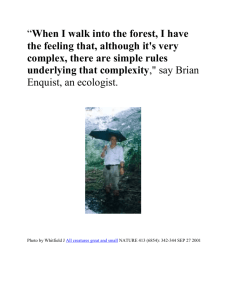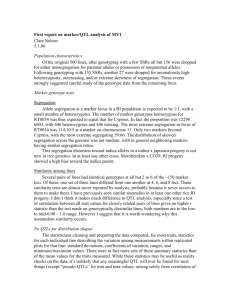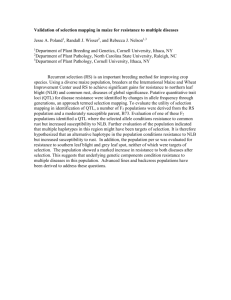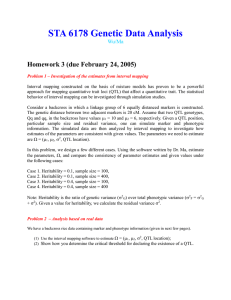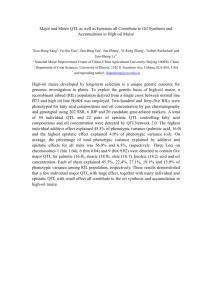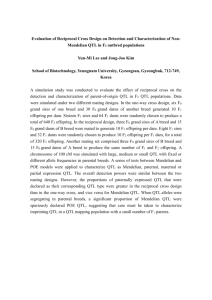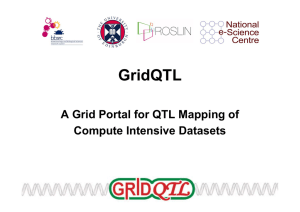QTL mapping in autotetraploid populations
advertisement
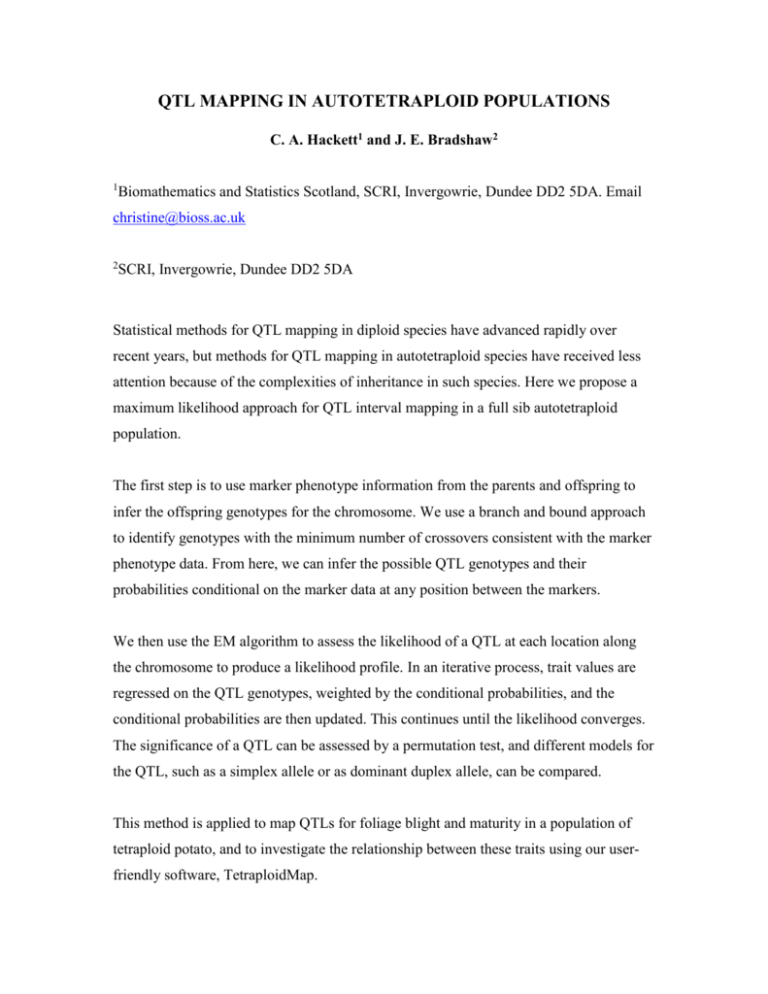
QTL MAPPING IN AUTOTETRAPLOID POPULATIONS C. A. Hackett1 and J. E. Bradshaw2 1 Biomathematics and Statistics Scotland, SCRI, Invergowrie, Dundee DD2 5DA. Email christine@bioss.ac.uk 2 SCRI, Invergowrie, Dundee DD2 5DA Statistical methods for QTL mapping in diploid species have advanced rapidly over recent years, but methods for QTL mapping in autotetraploid species have received less attention because of the complexities of inheritance in such species. Here we propose a maximum likelihood approach for QTL interval mapping in a full sib autotetraploid population. The first step is to use marker phenotype information from the parents and offspring to infer the offspring genotypes for the chromosome. We use a branch and bound approach to identify genotypes with the minimum number of crossovers consistent with the marker phenotype data. From here, we can infer the possible QTL genotypes and their probabilities conditional on the marker data at any position between the markers. We then use the EM algorithm to assess the likelihood of a QTL at each location along the chromosome to produce a likelihood profile. In an iterative process, trait values are regressed on the QTL genotypes, weighted by the conditional probabilities, and the conditional probabilities are then updated. This continues until the likelihood converges. The significance of a QTL can be assessed by a permutation test, and different models for the QTL, such as a simplex allele or as dominant duplex allele, can be compared. This method is applied to map QTLs for foliage blight and maturity in a population of tetraploid potato, and to investigate the relationship between these traits using our userfriendly software, TetraploidMap.
